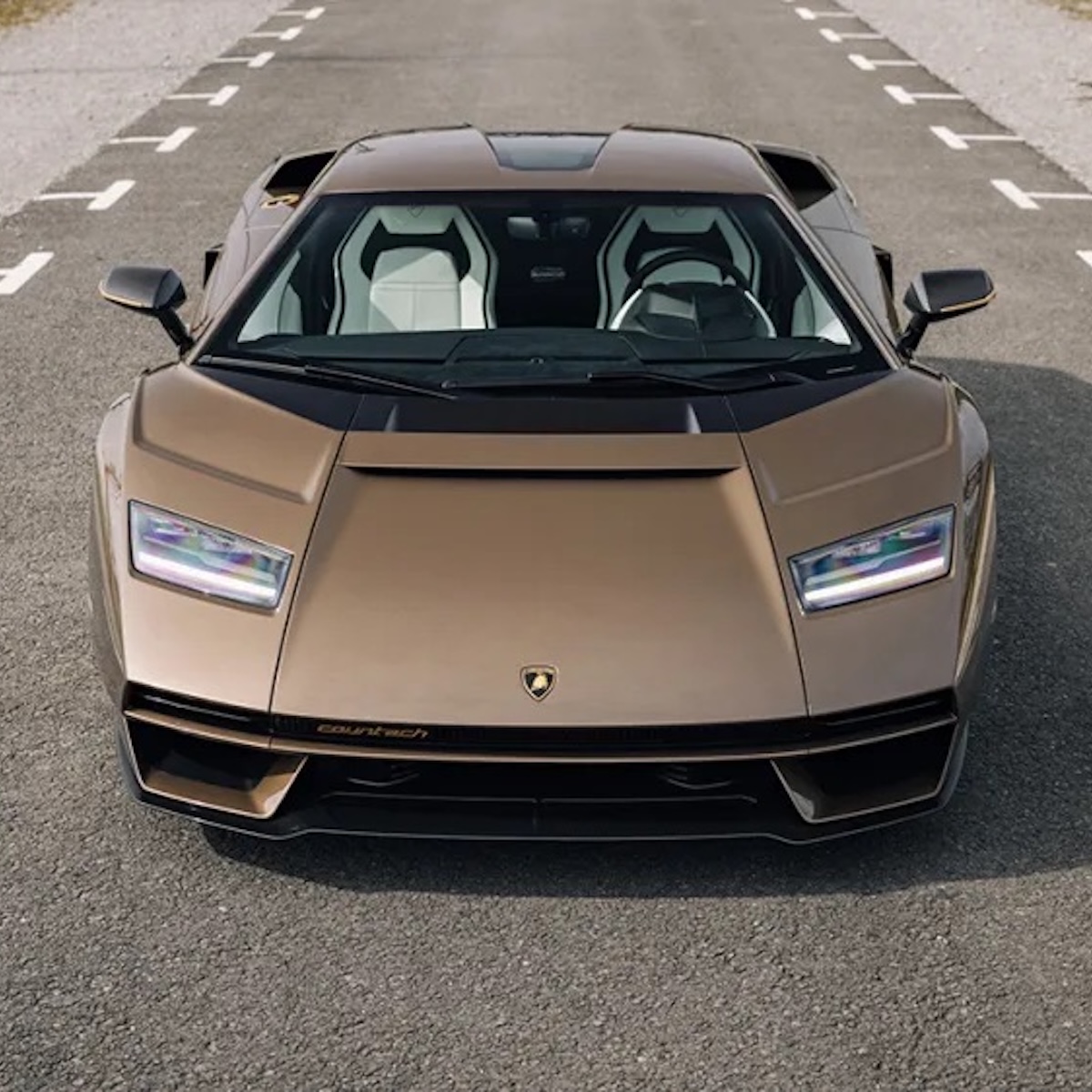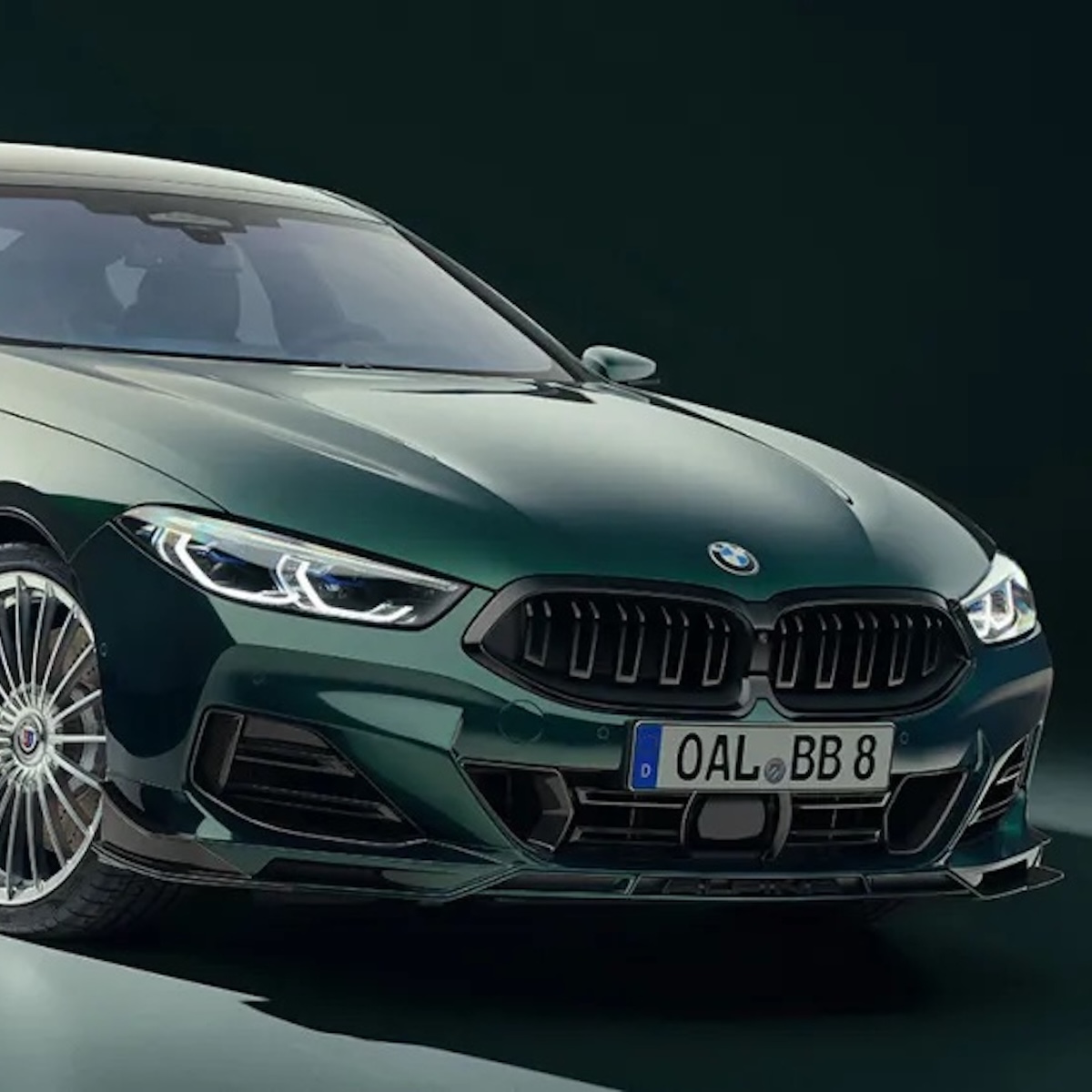Is there a car as quintessentially American as the Chevrolet Corvette? Ford and Jeep may disagree, but as far as US-made sports cars go, the ‘Vette is the be-all and end-all.
The two-door grabbed hold of the American imagination shortly after its introduction in the 1950s and never let go. Across eight design generations, the car has evolved from a sporty roadster with some pep into an aggressively styled, mid-engine beast that can compete with the very best sports cars coming out of Europe. Although today’s C8 barely resembles the original C1, each version of the Corvette has been among Chevy’s most powerful vehicles, if not the most, and without a doubt, its coolest-looking model.
With the 70th anniversary of the Corvette debut just weeks away, what better time to look back upon the nameplate’s history. A lot has changed over the decades, but one thing remains the same: the Corvette is as cool as American cars get.
A Brief History of the Chevy Corvette
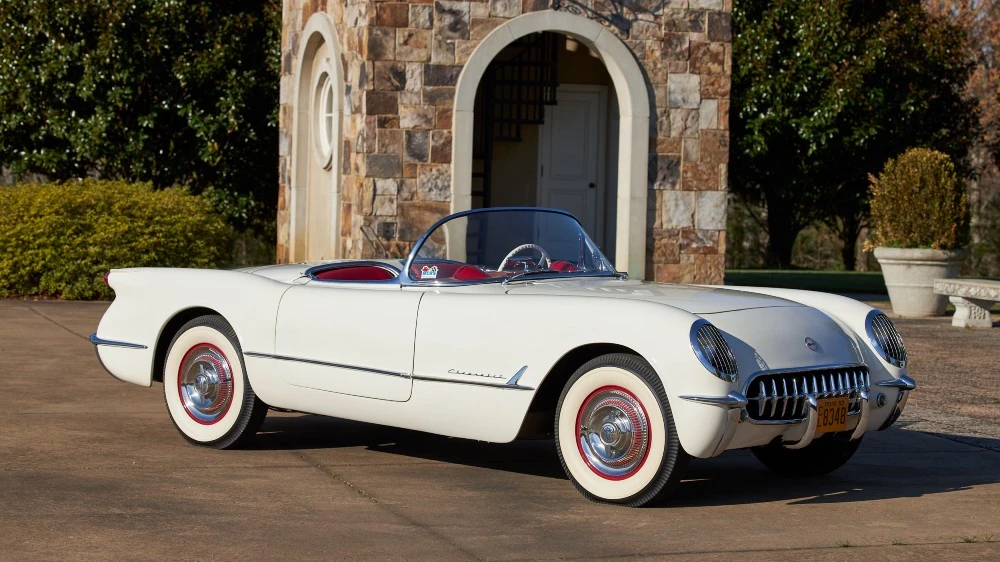
When the 1950s rolled around, Chevy wasn’t in the best of shape. Sales were slumping and the General Motors–owned marque was in need of something to reverse its fortunes. That’s when design executive Harley Earl, having taken note of all the GIs returning home from Europe with British sports cars, pitched the idea of an American-made equivalent. The brand’s interest was piqued and development of the vehicle commenced. The result was the Corvette, which would make its debut at the week-long GM Motorama held at New York’s Waldorf-Astoria Hotel in January 1953. The sports coupe received an overwhelmingly positive reception, pushing the Detroit giant to rush the car into production.
As hard as it may be to believe now, especially considering what’s happened in the decades since, the Corvette, which initially packed an inline-six connected to a two-speed automatic transmission, was not an immediate hit. In fact, Chevy barely only built 300 examples that first year. The next couple of years were better for the nameplate, but not enough to suggest that the car would become a legend. Something changed in 1955, though. That’s when engineer Zora Arkus-Duntov—now thought of as the “Father of the Corvette”—helped introduce the car to its first V-8. The next year the car received a slight makeover including a new grille and headlamps. Suddenly, Corvette wasn’t just trying to play the part of a European-inspired sports car—it was one.
It may have taken a few years, but Chevy cracked the formula during this first generation. The Corvette’s design has changed greatly over the decades and its engines have grown bigger and more potent, but by 1956, everyone knew exactly what the nameplate stood for. It’s because of this that the Corvette has served as Chevy’s halo car ever since. It’s also the rare car that has attracted a wide swath of drivers who have formed a deep connection to the model, one that has carried over from generation to generation. You don’t sell 1.7 million vehicles by accident after all, especially if the car in question is consistently among the highest-priced American-made vehicles.
The Models
The C1 (1953 to 1962)
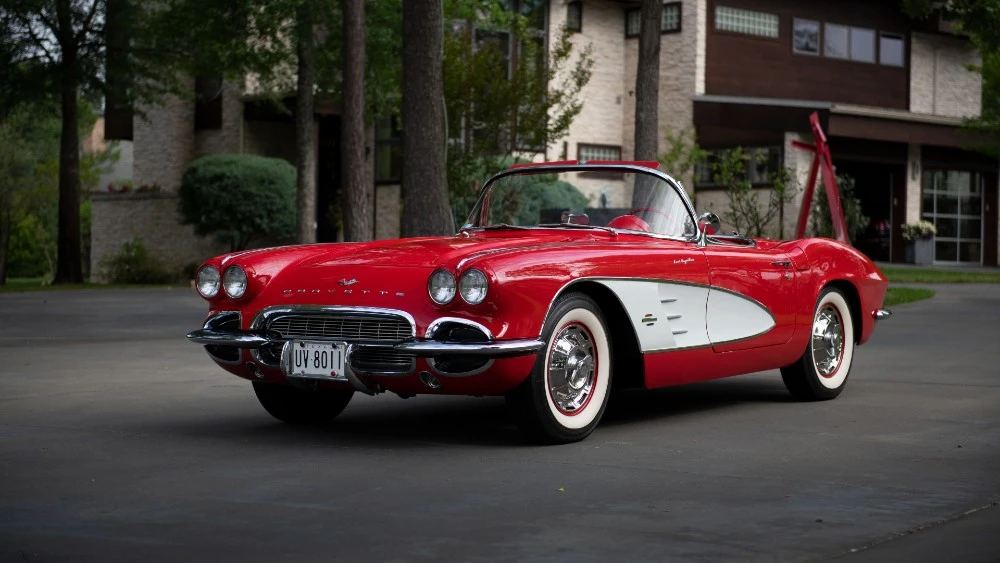
There may be no Corvette that underwent more changes over the course of a generation than the C1. The car that began rolling off the line just six months after the 1953 GM Motorama was more of a rough draft than the finished article. It launched as a small roadster only available in Polo White over a red interior with a removable black top and looked very similar to the similarly compact sports cars being produced by Jaguar and MG. The C1 wouldn’t really come into its own until the 1956 redesign, which saw the car stretched out and outfitted with a new front fascia that called to mind that of the Mercedes-Benz 300 SL. Chevy wasn’t done tweaking things, though, as C1’s last model year saw it fitted with a new rear end, the first to feature the nameplate’s signature quad-taillights.
The design wasn’t the only thing that underwent a quick and drastic evolution during the Corvette’s first generation. The car launched with a 3.9-liter inline six that could produce just 150 hp under the hood. To make matters worse, the mill was mated to a two-speed automatic. Luckily things changed in 1955 when both a 4.3-liter V-8 that generated 195 hp and a three-speed manual gearbox were introduced, effectively turning the Corvette into a full-fledged sports car. This was even more true by the end of the generation, when the model was available with a fuel-injected 5.4-liter V-8 that could pump out up to 360 horses.
The C2 (1963 to 1967)
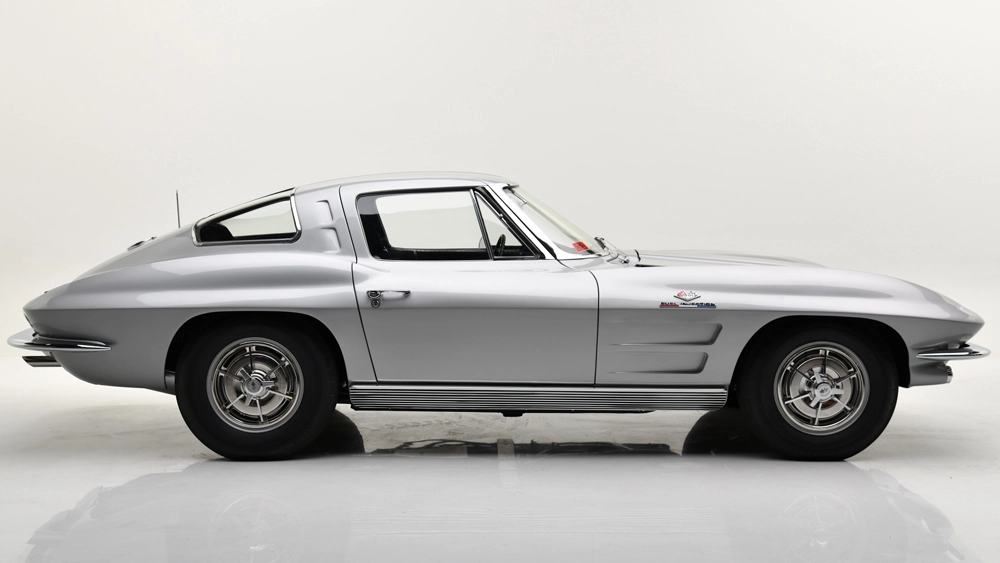
The Corvette was a certifiable hit by the end of 1962. That didn’t stop Chevy from releasing a completely new version of the model in 1963, though. The C2 was much sleeker than its predecessor and smaller, too. The biggest difference, though, was the introduction of a coupe version called the Sting Ray (the automaker would switch to “Stingray” in later generations), which in its first year featured a unique split window design. Both the open- and hard-top versions were sporty, but there was also an elegance to the design, some ‘Vette enthusiasts would point out, that hasn’t been matched since.
By the time the C2 went into production, Chevy knew that only a V-8 would do for its premier model. In 1965, the marque decided it had taken the small-block eight-cylinder mill about as far as it could go, and switched over to a big-block version. The result was a lot more power. In fact, in 1967, the generation’s last year of production, you could opt for a 7.0-liter big-block V-8 with a 3×2-barrel carburetor setup that could produce a monstrous 435 horses and 460 ft lbs of twist.
A coupe wasn’t the only new development for this generation. The first year of the C2 also saw the launch of its first performance variant, the Z06. The package allowed customers to buy a race-ready version of the car, which included a dual master cylinder, larger shock absorbers and a bigger front anti-roll bar, just to name a few of the modifications.
The C3 (1968 to 1982)
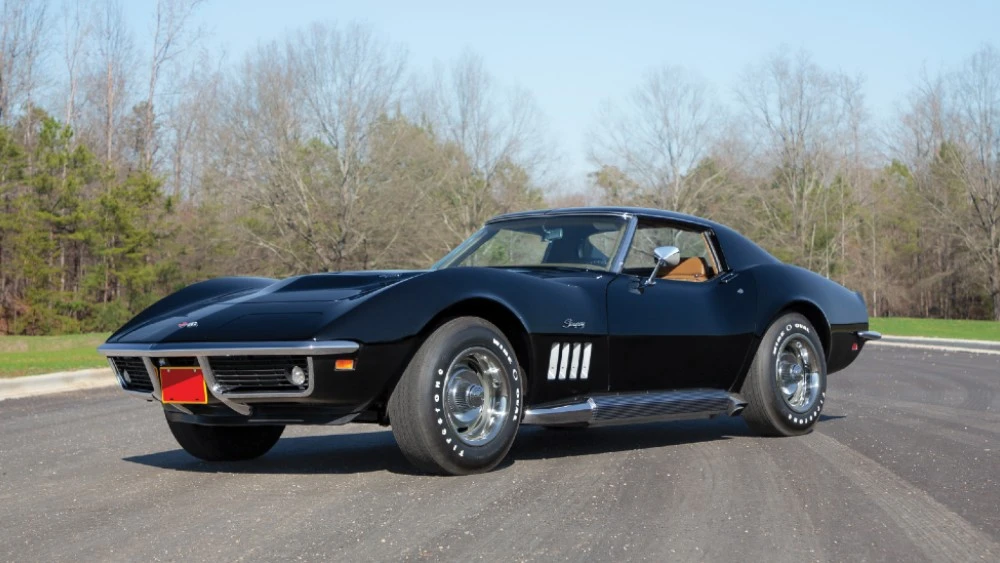
Whereas the C2 is perhaps the most refined Corvette, the C3, which debuted in 1968, is the funkiest. Chevy gave the sports car a wild and curvy body inspired by Larry Shinoda’s Mako Shark II concept car. The Stingray also included removable roof panels for the first time in model history, allowing all Corvette drivers to feel the wind through their hair while out on the open road. The new design was certainly bold, and while it wasn’t for everyone, there’s no denying it was cool. Need proof? Just look at one of the most famous photos of the late Joan Didion . . . which shows the legendary writer sitting inside her white 1969 Stingray. The car was also a hit with the general public, and in 1977 the 500,000th example rolled off the line.
While the Corvette had undergone a massive exterior makeover between its second and third generations, the car beneath was left relatively untouched. A V-8 still lurked underneath its long, flowing hood, but the near-annual performance leaps of its first two generations were a thing of the past. That’s not to say the car lacked grunt, but it wasn’t pushing boundaries the way it had before. Despite this, the naturally aspirated 7.0-liter LS7 V-8 available at the dawn of the 1970s could deliver up to 460 hp, making it the most powerful mill from the Corvette’s first three decades of production. By the end of its run, though, the C3 was only available with a 200 hp V-8 and a four-speed automatic transmission.
The C4 (1984 to 1996)

The Corvette’s fourth generation is where it truly became a modern-day sports car. Unlike its predecessor, the C4 received a complete top-to-bottom redesign, the nameplate’s first since 1963. The car launched as part of the 1984 model year—a small number of examples were built in 1983, almost all of which were promptly destroyed—and showed up with a cleaner and more angular look than any of its predecessors. It was also the first Corvette that didn’t sport fiberglass body panels, and the targa version (which was offered this generation instead of a coupe) also had a glass hatchback. Chevy would tweak the design slightly in 1991 to ensure the car didn’t get stuck in the prior decade, but the sleek design holds up to this day.
The C4 launched with the same V-8 found in the final C3, though it produced an extra five horses. By 1991, though, you couldn’t buy a Corvette with less than 300 hp—which was a first for the car. If you wanted more power, there was always the ZR1 package, which, over the last three years of the generation, came with a 5.7-liter LT5 V-8 that produced 405 horses and 375 ft lbs of twist. The highlight of the generation was the Grand Sport variant. It had a 330 hp LT4 V-8 mated to a manual transmission and was conceived as a modern version of the Corvette Grand Sport race cars of the 1960s.
This generation also saw the production of the 1,000,000th Corvette, just 13 years after the 500,000th was built. In honor of the very first C1, the car was a convertible finished in Polo White over red with a black top.
The C5 (1997 to 2004)
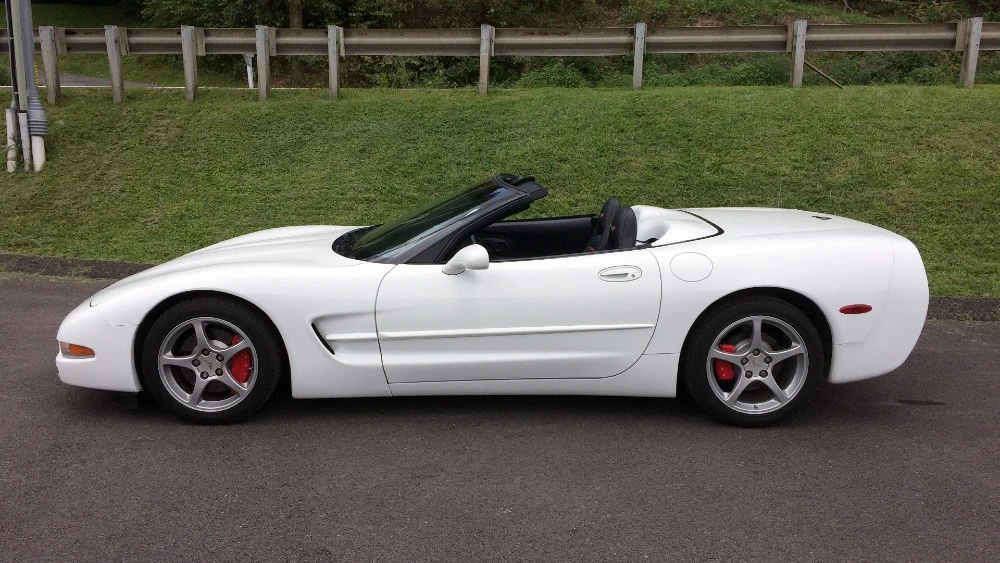
The C5, which was introduced in 1997, was more of a revision than a reimagining of the C4. The two generations may look similar, but the newer Corvette was curvier and had a bigger footprint. It was also longer and wider than its predecessor. Three Corvette body styles were offered this generation—a targa, a convertible and a fixed roof coupe, which was introduced in 1999. The coupe would serve as the entry-level Corvette for the next five years. It didn’t just look different than the other versions, either; it was actually stiffer and lighter.
This generation also received a serious power bump. The base version of the brand-new LS1 V-8, which came mated to either a four-speed automatic or six-speed manual, produced 345 hp from day one. No ZR1 variant was offered, but the generation did see the official return of the Z06, which hadn’t been available since 1967. The lightweight, performance-oriented model featured a specially tuned LS1 mill that pumped out a maximum of 405 horses. Thanks to this, the car could launch from zero-to-60 mph in just 4.5 seconds, a half second faster than the standard Corvette. This generation also saw the launch of a grand touring race car called the C5-R, which claimed class victories at the 24 Hours of Daytona, 12 Hours of Sebring and the 24 Hours of Le Mans.
The C6 (2005 to 2013)
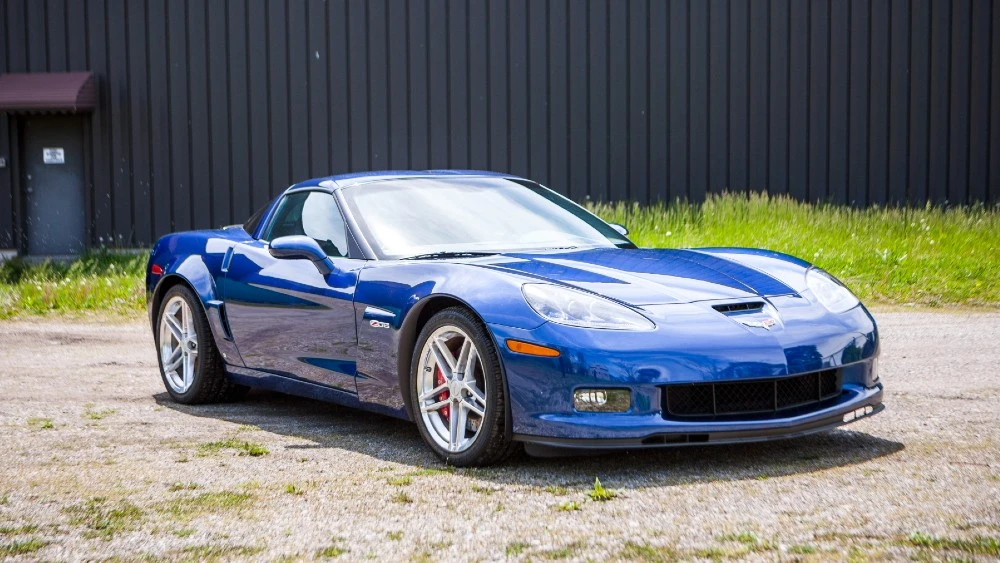
The C6 didn’t look wildly different from its two most recent predecessors when it showed up in 2006, except for one major difference up front—a pair of exposed headlights. This may seem minor, but it was the first time the feature had appeared on a Corvette since 1962, the final year of the C1. Aside from that, the car featured a more refined version of the profile Chevy had been using since 1984 along with cleaner lines. Again, three body types were available: a targa, convertible and a hard-top coupe, although the last was reserved for high-performance variants.
The C6’s body may not have been much different from that of the C5, but its engine certainly was. The car came with the LS2, which was a bigger and more powerful version of the last-generation mill. The 6.0-liter V-8 was capable of generating 400 hp and 400 ft lbs of torque. It was replaced three years later by the even bigger and more powerful 6.2-liter LS3 V-8, which produced 430 hp and 424 ft lbs of torque. And there was an even more powerful mill on offer: The generation’s Z06 variant (and later the 60th anniversary 427 convertible) came equipped with the 7.0-liter LS7 V-8, which pumped out 505 horses and 470 ft lbs of torque. This mill was potent enough to rocket the car from zero-to-60 mph in 3.4 seconds and to a top speed of 190 mph. The Dodge Viper may have still been in production at the time, but there was no doubt which American sports car was king.
The C7 (2014 to 2019)
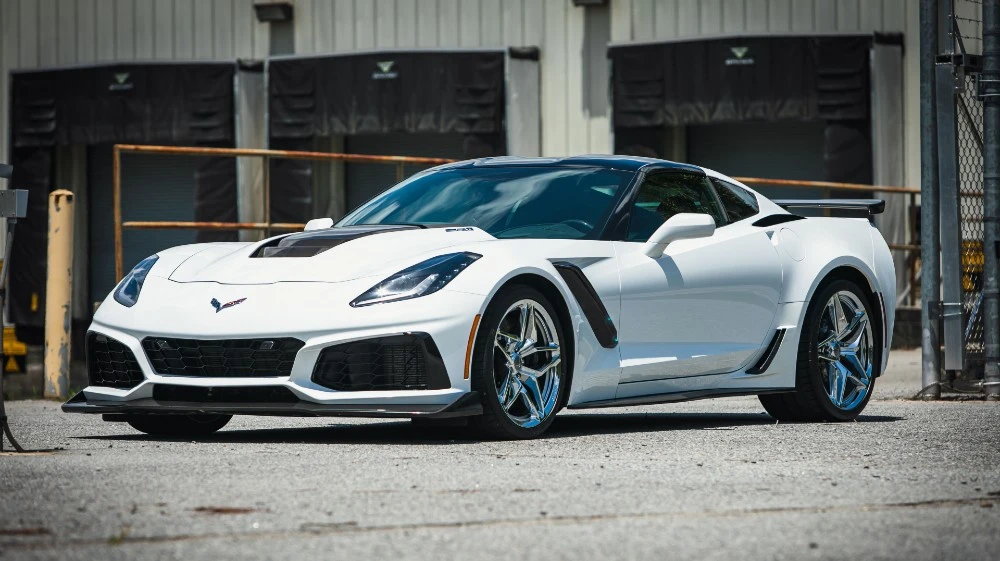
After nearly 30 years of playing around with the same general shape, Chevy decided to really change things up in 2014 with the C7. It’s much more aggressively styled that its predecessors and has a more prominent rear end. It also had a carbon-fiber hood and removable roof panels. This generation was also the first to carry the Stingray name since 1968. As sporty as the latest Corvette may have looked, its high-performance variants were even more so. The Z06 had a more aggressive aero package, the Grand Sport was wider and the ZR1 added a giant rear wing.
Although Chevy considered shifting to a mid-engine layout this generation, the marque’s engineers chose to keep the mill up front. And what an engine it was. The base 6.2-liter LT1 V-8 was capable of churning out 455 hp and 460 ft lbs of torque. Thanks to that, even the entry-level C7 was capable of sprinting to 60 mph in under four seconds and hitting a top speed of 186. If that somehow wasn’t impressive enough, the Z06 came with a supercharged and intercooled 6.2-liter LT4 V-8 that could churn out 650 hp and 650 ft lbs of torque. But the king of this generation was the ZR1 that paired its giant wing with a 6.2-liter LT5 V-8 equipped with a 2.6-liter Eaton supercharger. This powerhouse, which only came mated to a manual transmission, could pump out a ridiculous 755 horses and 715 ft lbs of twist and is still the most powerful engine in factory Corvette history.
The C8 (2020 to the present)

The eighth-generation Corvette may just represent the largest evolutionary leap in the nameplate’s history. Although the C7 featured a fresh redesign, the C8 looks like a completely new car altogether when it was unveiled in the summer of 2019. From front to back, it’s all sharp angles and aggressive lines. As has been the case during several points in its history, the Corvette is arguably the coolest-looking American sports car you can buy right now.
The biggest change, though, can be found in the rear in the engine bay. That’s right, you won’t find the car’s mill under the hood anymore. After years of rumor and speculation, Chevy finally pulled the lever and opted for a mid-engine layout for the Corvette. The move puts the car in line with the sports cars produced by marques such as Porsche and Ferrari. The engine is no slouch, either: The 6.2-liter LT2 V-8 found in the base Stingray and convertible produces 490 hp and 455 ft lbs of torque. Even more impressive, though, is the 5.5-liter DOHC V-8 in the new Z06, which spits out a hair-raising 670 horses and 460 ft lbs of twist. You won’t just feel all that added oomph, either, as the mill’s flat-plane crank ensures it emits the perfect thunderous crackle even when you’re not pushing it to its limits. It’s currently the most powerful C8, though the upcoming hybrid and all-electric models may knock it off its throne.
RELATED: The Chevy C8 Corvette: Everything We Know About the Powerful Mid-Engine Beast
At a glance, no Corvette might be more different from the C1 than the C8, but in truth, the latest version of the car is a return to its roots. With the C8, Chevy has made a sports car that can compete with the best sports cars coming out of Europe. Wasn’t that the whole point of the car in the first place?
What’s Next: A Corvette SUV?
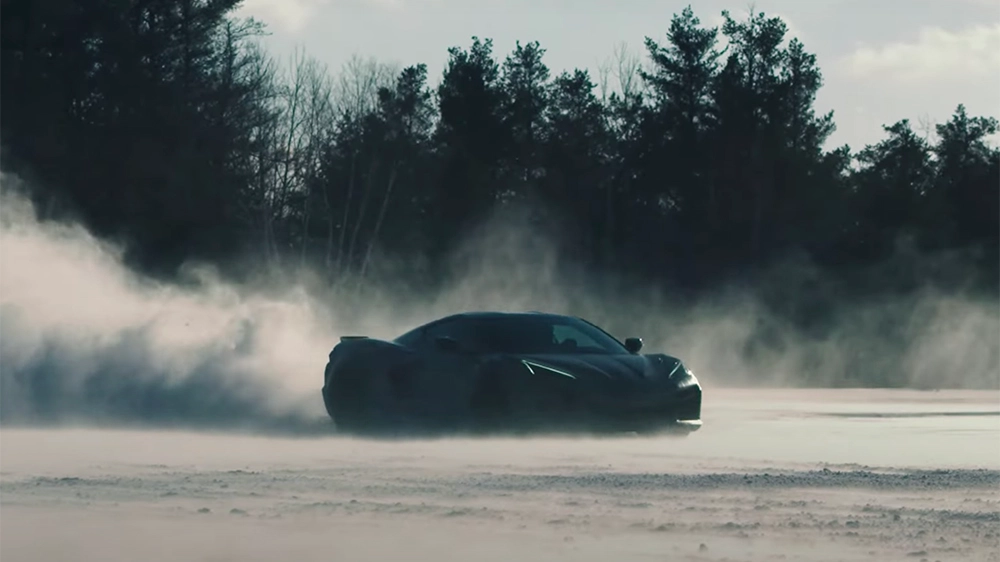
Electrification isn’t the only exciting development on the horizon for Chevy’s most famous model. The Detroit giant may be ready to find out once and for all if Corvette is really more than just a car by spinning the name off as its own sub-brand by the middle of the decade.
Corvette could make the jump from model line to full vehicle lineup by 2025, if a report published by Car and Driver in November is to be believed. Chevrolet has yet to confirm the story, but it hasn’t denied it, either. When Robb Report reached out for comment on the story, a representative for the brand called the article “speculative.” As strange as it may sound, the move isn’t unprecedented. Stellantis-owned Dodge has had great luck spinning off the Ram as its own truck brand.
Little is known about the potential sub-brand at this point. The magazine did report that two of the launch models could be a “sleek” four-door coupe and a brawny SUV, both of which will share a design language and driving dynamics with the C8. One also has to assume the current Corvette will be included, too, though it remains to be seen what its full name would become.
One thing we know for sure, the Corvette still inspires both fierce loyalty and excitement, no small feat after seven decades.








